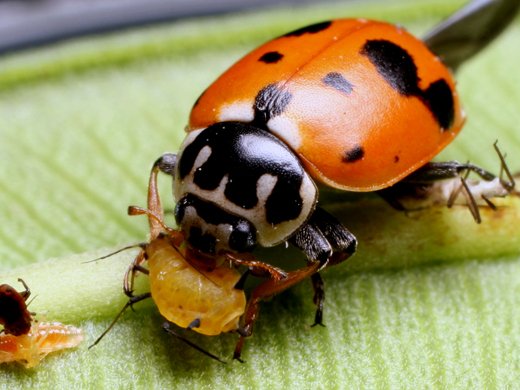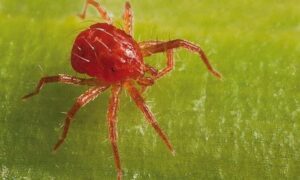What are the THROATS?
Aphids are one of the most frequent pests that our crops and garden plants suffer from. It consists of small insects that feed on the sap of the stems and leaves, normally these insects are associated with ants, as these use them for food, you could say that they are the cows of the ants.
As a consequence of the appearance of this pest, the plants become sick and can even kill them. In addition, there are several types of aphids on plants: black aphid, green aphid, yellow aphid, white aphid and red aphid.
Why are there aphids on our plants?
The most frequent causes of the appearance of this pest are the rise in temperatures, the lack of nutrients or an excess of irrigation and, as we said before, the appearance of ants.

It is a pest that attacks many species of plants but is very common among rose bushes, horticultural crops, fruit trees, poplars and conifers.
How does the aphid AFFECT our plants?
The weakness originated in the plant by this attack slows its growth and reduces flowering, since what they do is to feed on the sap and consequently our plants get sick.
On the other hand, aphids can transmit diseases from one plant to another, this happens after feeding on an infected specimen they move to another healthy one and after being attacked it can contract other diseases from other diseased plants.

How to ELIMINATE aphids naturally?
APHID PREDATORS
Ladybugs (coccinellids). They are the best known predators. They are very voracious both in their adult and larval stages. The most important species are Adalia bipunctata (two-spotted ladybug) and Adalia bipunctata (two-spotted ladybug). Coccinella septempuctata (seven-spotted ladybug)
Sift flies (Sylphidae). They have great potential as biological control agents for aphids. The adult fly is a pollinating insect and the females oviposit near aphid colonies. The larval stage is aphidophagous (feeds exclusively on aphids) although sometimes they also suffer parasitoidism which reduces their effectiveness. In the outdoor aphid control strategy it is important to have insectary plants that provide food for the adults (Lobularia, Coriandrum, Fagopyrum, Chrysanthemum, Phacelia, etc). The most commonly used syrphid is Episyrphus balteatus.
Cecidomyid mosquitoes. Like the syrphids, only their larval stages are specific aphid predators. They have a good capacity to detect new pest outbreaks and are widely used in releases on overwintered horticultural crops. The most commonly used is Aphidoletes aphidimiza
Chrysopas. They are generalist predators, i.e., they consume large quantities of pest insects such as thrips, whiteflies, leafminers, etc. Although both the adult and larval stages normally feed on aphids, in the case of the most commonly used lacewing in biological control, Crhysoperla carnea, only the larval stage is a predator.

APHID PARASITOIDS
The action of parasitoids plays a very important role in reducing aphid populations both outdoors and in greenhouses. The most important of these are the microvirflies (hymenoptera) belonging to the subfamily Aphidiinae.
Lysiphlebus testaceipes. It is the most widespread and effective parasitoid for aphid control in gardening and other outdoor crops. Although it is not native, it is widely spread throughout the Mediterranean strip. Very effective control of the citrus aphid Toxoptera aurantii and the dangerous polyphagous aphid Aphis gossypii.
Aphelinus abdominalis. Wasp especially indicated for the control of aphids Macrosiphon euphorbiae and Myzus pericae.
Aphidius colemani and Aphidius ervi. For control of small and large aphids respectively. They are used both outdoors and in flooded releases in protected crops.


